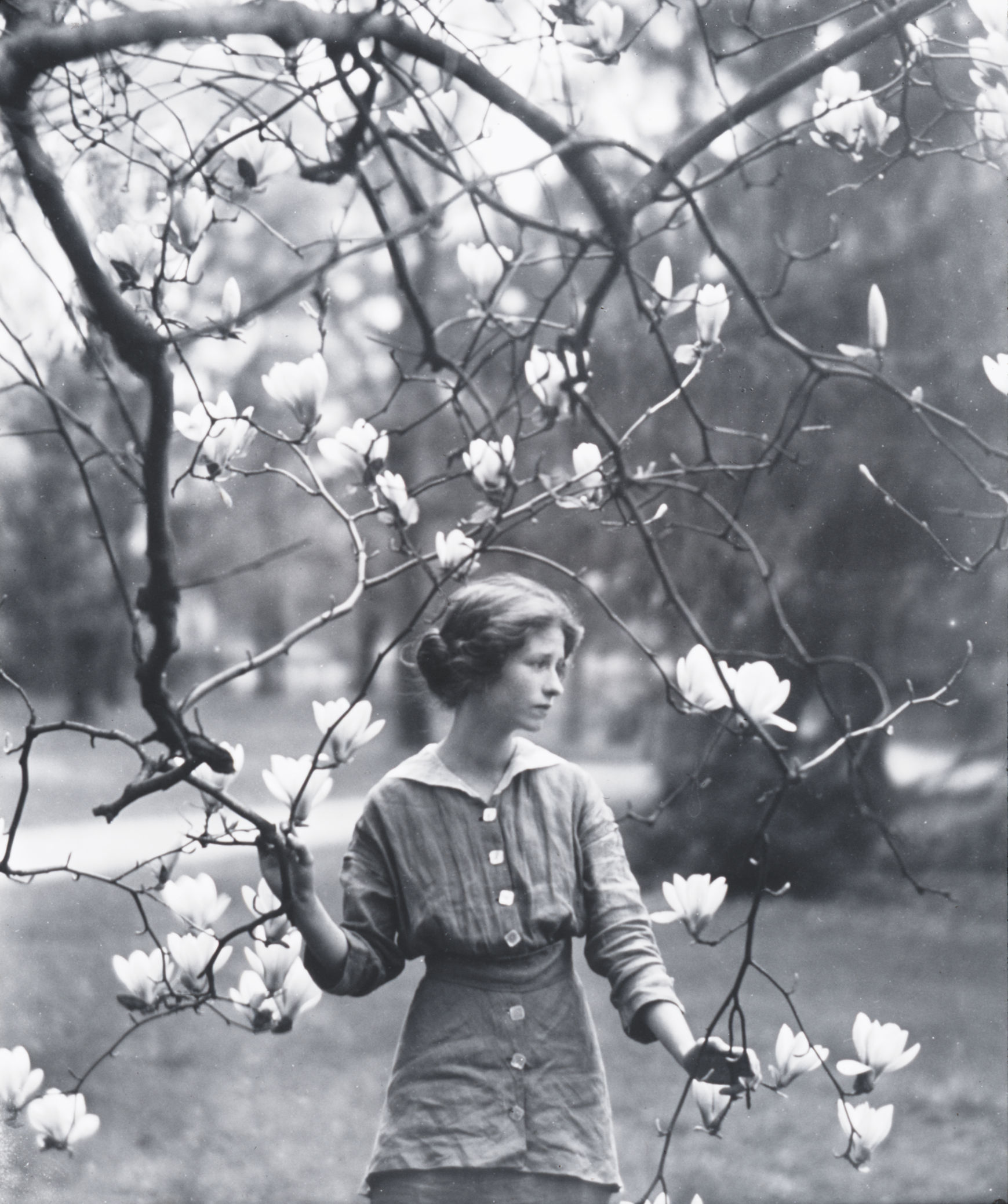The famous 1913 photo taken in Mamaroneck by Arnold Genthe
'My candle burns at both ends;
It will not last the night;
But ah, my foes, and oh, my friends –
It gives a lovely light!'
'First Fig' is undoubtedly the most famous poem by Edna St Vincent Millay (1892–1950), and it is quoted more than once in Nancy Milford's huge, fascinating and highly informative biography of Millay. This scholarly work contains much original research on the poet (and playwright), and much of that came from documents found at Millay's former home Steepletop in Austerlitz, upstate New York: Millay's late sister Norma gave Milford access to this material.
The back cover notes that Thomas Hardy spoke of the two great attractions of North America: the skyscraper and Edna St Vincent Millay, and certainly 'Fig Fig' has played a large part in perpetuating the myth of this New Woman – independent, highly sexually adventurous and very forthright.
Personally, Millay just as much reminds me of being greeted at the entrance to and exit from the Staten Island ferry terminal with her words from 'Recuerdo' – not mentioned in the biography – which convey a similar impression to the lifestyle in 'First Fig':
'We were very tired, we were very merry,
We had gone back and forth all night on the ferry'.
Vincent Millay was born into a poor family in Rockford, Maine, which in the poet's early years became a one-parent family with three daughters (Vincent, Norma and Kathleen in that order) after mother Cora gave inadequate father Henry his marching orders: he was abusive, although the book never clarifies in what way.
The book quotes from many previously unpublished poems and letters throughout, and the first half of Savage Beauty charts the progress of Millay (whose mother was a poetry lover) from her first publication 'Renascence', through Vassar and her early lesbian entanglements (especially with Elaine Ralli), the bohemia of Greenwich Village, her first book publications, and her first stay in Paris.
The second half of the book begins in 1923, the year Millay married the older Eugen Boissevain, who was to prove a great stabilising influence on Millay. This was not a conventional marriage by any means though, and Eugen and Vincent had an open marriage in which it was largely Vincent who did the screwing around — indeed, Eugen seemed to get a sexual charge from it. One enduring relationship Millay had was with the younger gifted poet George Dillon, who never lived up to his early promise and with whom she remained in some form of contact for many years.
In the year of their marriage they bought Steepletop, which is where Vincent ended her days. The Steepletop years are those when Millay became very famous — her poetry reaching a much greater public than poetry normally reaches. Milford doesn't attempt a critical biography, but instead uses the poetry more as a means of suggesting what is happening in Millay's head, how she's reacting to different situations.
Millay was full of contradictions and Savage Beauty endeavors to mention them — the desire for independence versus the need for stability, the confident modern woman against the uncertain child within, etc. And although the author seems half in love with her subject, she doesn't try to gloss over Millay's faults.
This is also a story of sibling rivalry within a close family background, of enduring marital love, and of tragedy in the declining years, when Millay takes to the bottle and the needle. When Eugen dies in 1949, a heartbroken Vincent will only last out a little more than a year before she falls down the stairs at Steepletop and breaks her neck. Not a woman you can forget easily, and a book you're bound to remember too.
My other Edna St Vincent Millay posts:
––––––––––––––––––––––––––––––––––––
Edna St Vincent Millay, Austerlitz, NY
Edna St Vincent Millay in Ring's Island, Salisbury
.jpg)

No comments:
Post a Comment